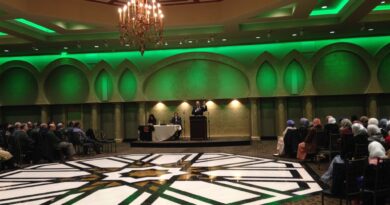History of Corpus Christi
Corpus Christi, Texas, is a vibrant coastal city with a rich and diverse history that spans centuries. From its early days as a settlement explored by Spanish conquistadors to its development as a key military hub during World War II and its current status as a thriving port city, Corpus Christi has played a significant role in the history and growth of Texas. This article explores the fascinating history of Corpus Christi, tracing its origins, key events, and the cultural influences that have shaped this unique city.
Early Exploration and Settlement
The history of Corpus Christi begins with its exploration by Spanish explorers in the early 16th century. The area was originally inhabited by the Karankawa Indians, a Native American tribe known for their nomadic lifestyle and fishing skills. The first European to set foot in the region was Spanish explorer Alonso Álvarez de Pineda, who arrived in 1519. Pineda mapped the Gulf Coast, including the bay of Corpus Christi, which he named after the Feast of Corpus Christi, a Catholic celebration that coincided with his arrival.
Spanish Influence
For several centuries, the region remained largely unexplored by European settlers, with occasional visits by Spanish missionaries and explorers. However, by the early 18th century, Spain began to establish missions and presidios (military outposts) in Texas to solidify its claim to the territory and convert the native populations to Christianity. Despite these efforts, the Corpus Christi area remained sparsely populated until the early 19th century.
The Founding of Corpus Christi
Corpus Christi as we know it today was founded in 1839 by Colonel Henry Lawrence Kinney. Kinney, an entrepreneur and trader, established a small trading post on the site to conduct business with the Mexican government and local tribes. This trading post, known as Kinney’s Trading Post, became the nucleus of the future city. The settlement was strategically located on the western shore of Corpus Christi Bay, making it an ideal spot for trade and commerce.
Early Growth and Development
In 1845, during the buildup to the Mexican-American War, Corpus Christi was selected as a staging ground for General Zachary Taylor’s army. Taylor’s troops were stationed in the area before marching south to engage Mexican forces. This military presence brought significant attention to the settlement, leading to its growth and the establishment of a more permanent community. By the end of the war in 1848, Corpus Christi had transformed from a small trading post into a burgeoning town.
The Civil War and Reconstruction Era
The Civil War (1861-1865) had a profound impact on Corpus Christi. Texas seceded from the Union and joined the Confederacy, and Corpus Christi’s strategic location made it a target for Union forces. In 1862, Union gunboats launched an attack on the city, known as the Battle of Corpus Christi. Although the battle was relatively small and resulted in few casualties, it marked a significant moment in the city’s history. After the war, Corpus Christi, like much of the South, faced the challenges of Reconstruction and rebuilding its economy.
Post-War Economic Development
In the years following the Civil War, Corpus Christi began to recover and grow. The city’s location along the Gulf of Mexico made it an important port for trade and shipping. By the late 19th century, the arrival of the railroad further boosted Corpus Christi’s economy, connecting it to other major cities in Texas and beyond. The city became a hub for the export of agricultural products, particularly cotton and cattle, contributing to its economic resurgence.
The Early 20th Century: Growth and Modernization
The early 20th century was a period of significant growth and modernization for Corpus Christi. The discovery of oil in the nearby areas of South Texas brought an economic boom to the region, attracting new businesses and residents to the city. The Port of Corpus Christi was officially opened in 1926, further solidifying the city’s role as a key shipping and trade center. The port quickly became one of the busiest in the United States, handling a wide range of goods, including oil, agricultural products, and industrial materials.
Natural Disasters and Recovery
Corpus Christi’s location on the Gulf Coast has made it vulnerable to hurricanes and other natural disasters. In 1919, the city was struck by a devastating hurricane that caused widespread damage and loss of life. The storm destroyed much of the city’s infrastructure, including homes, businesses, and the port. However, Corpus Christi demonstrated remarkable resilience in the face of adversity. The city quickly rebuilt, and by the 1930s, it was once again thriving, with new developments, improved infrastructure, and a growing population.
World War II and the Post-War Era
World War II brought significant changes to Corpus Christi. The city became an important military hub, with the establishment of the Naval Air Station Corpus Christi in 1941. The base served as a training center for naval aviators, including future President George H.W. Bush. The influx of military personnel and their families brought new economic opportunities to the city, leading to further growth and development.
Post-War Expansion
After the war, Corpus Christi continued to expand. The population grew rapidly, and the city saw the construction of new housing developments, schools, and infrastructure to accommodate the growing community. The 1950s and 1960s were marked by a period of suburbanization, as more people moved to the city in search of jobs and a better quality of life. The local economy diversified, with the growth of industries such as petrochemicals, manufacturing, and tourism.
The Modern Era: Corpus Christi Today
In recent decades, Corpus Christi has continued to evolve and adapt to changing economic and social conditions. The city remains a major hub for the oil and gas industry, with numerous refineries and related businesses operating in the area. The Port of Corpus Christi has also continued to expand, becoming one of the largest and most important ports in the United States.
Tourism and Culture
Tourism has become an increasingly important part of Corpus Christi’s economy. The city’s beautiful beaches, vibrant cultural scene, and numerous attractions draw visitors from across the country. The Texas State Aquarium, the USS Lexington Museum on the Bay, and the Corpus Christi Museum of Science and History are just a few of the popular destinations that showcase the city’s rich history and natural beauty. Corpus Christi is also known for its annual festivals, including the Buc Days Festival and the Texas Jazz Festival, which celebrate the city’s diverse culture and heritage.
Environmental Challenges
As a coastal city, Corpus Christi faces ongoing environmental challenges, including the threat of hurricanes, coastal erosion, and the impact of climate change. The city has taken steps to address these issues through initiatives aimed at improving coastal resilience, protecting natural habitats, and promoting sustainable development.
Conclusion
Corpus Christi’s history is a story of resilience, growth, and adaptation. From its early days as a remote Spanish outpost to its current status as a bustling modern city, Corpus Christi has played a vital role in the development of Texas and the United States. Today, it stands as a testament to the enduring spirit of its residents and the rich cultural heritage that continues to shape the city’s identity. As Corpus Christi looks to the future, it remains a vibrant and dynamic community with a deep connection to its past and a strong vision for what lies ahead.
Discover more from City Towner
Subscribe to get the latest posts sent to your email.




